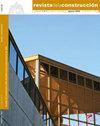用眼动法分析某建筑工地的安全监测
IF 1.4
4区 工程技术
引用次数: 1
摘要
建筑工作是最危险的行业之一。在建筑工程中发生职业意外,会造成伤亡等影响人命的后果,以及严重的经济损失。特别是在发展中国家,尽管职业安全方面的预防措施有所增加,但职业事故仍在继续发生。人的行为是建筑施工事故发生的重要因素。在普遍受教育程度较低的施工部门,分析预防措施和职业安全培训结果对减少建筑施工事故具有重要意义。眼动追踪技术是一项正在世界范围内传播的技术,它在不同的领域找到了自己的位置。特别是随着移动眼动仪取代固定眼动仪的使用,这种眼动追踪技术在建筑行业的现场实施中也变得可用。近年来,在建筑行业,利用眼动追踪技术对职业安全问题进行了一些研究。在本研究中,建筑工人使用移动眼动追踪方法进行现场研究,通过在发生致命职业事故的建筑中创建不同危险源的轨道。在此背景下,通过移动眼动追踪技术测量了建筑工人对不同危险源的注意水平以及这些危险源造成的事故风险。从研究中获得的结果与现场的职业安全专家分享,并对结果进行解释。所有参与实验研究的工人都是以前接受过职业安全培训的工人。因此,根据本实验的结果,衡量他们接受职业安全培训的有效性,并提出一些建议。本文章由计算机程序翻译,如有差异,请以英文原文为准。
Safety monitoring analysis in a construction site using eye-tracking method
Construction work is one of the most dangerous business lines. As a result of occupational accidents in construction works, there are consequences that will affect human life such as injury and death, as well as serious financial losses. Especially in developing countries, despite the increase in precautions regarding occupational safety, occupational accidents continue to occur. Human behavior is an important factor in construction work accidents. In the sector where generally low-educated level workers work, analyzing the precautions and occupational safety training results are important to reduce construction work accidents. Eye-tracking technique, a technology that is spreading around the world, finds its place in different sectors. Especially with the use of mobile eye trackers instead of fixed eye trackers, this eye-tracking technology has also become usable in site implementations in the construction industry. In the construction sector, some studies are done especially on occupational safety issues using eye-tracking techniques in recent years. In this study, a site study was done with construction workers using a mobile eye-tracking approach by creating a track with different hazard sources in construction where a fatal occupational accident occurred. In this context, the attention levels of construction workers against different sources of danger and the risk of accidents created by these sources were measured with the mobile eye-tracking technique. The results obtained from the study were shared with the occupational safety experts on the site and the results are interpreted. All workers participating in the experimental study were workers that previously got occupational safety training. Therefore, according to the outcomes of this experiment, the effectiveness of the occupational safety training they received is measured and some suggestions are made.
求助全文
通过发布文献求助,成功后即可免费获取论文全文。
去求助
来源期刊

Revista de la Construccion
工程技术-工程:土木
CiteScore
2.30
自引率
21.40%
发文量
0
期刊介绍:
The Journal of Construction is aimed at professionals, constructors, academics, researchers, companies, architects, engineers, and anyone who wishes to expand and update their knowledge about construction. We therefore invite all researchers, academics, and professionals to send their contributions for assessment and possible publication in this journal. The publications are free of publication charges.
OBJECTIVES
The objectives of the Journal of Construction are:
1. To disseminate new knowledge in all areas related to construction (Building, Civil Works, Materials, Business, Education, etc.).
2. To provide professionals in the area with material for discussion to refresh and update their knowledge.
3. To disseminate new applied technologies in construction nationally and internationally.
4. To provide national and foreign academics with an internationally endorsed medium in which to share their knowledge and debate the topics raised.
 求助内容:
求助内容: 应助结果提醒方式:
应助结果提醒方式:


